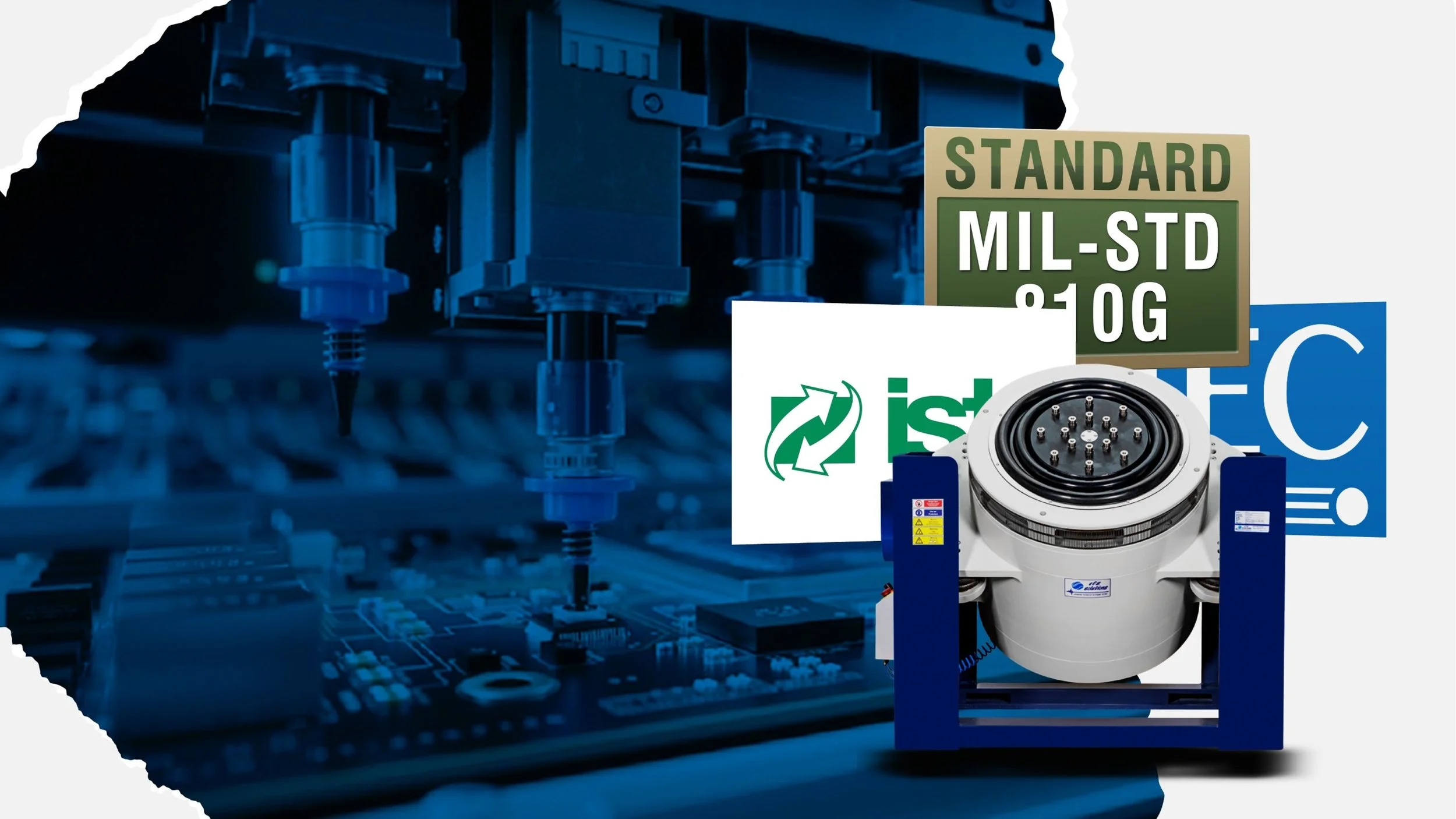Vibration Testing Standards and Requirements for Electronics Manufacturers
In the fast-evolving world of electronics manufacturing, ensuring the reliability and durability of products is paramount. From smartphones and laptops to complex industrial control systems, electronic components are expected to perform flawlessly under a wide range of conditions.
Vibration testing plays a critical role in this process by simulating the stresses that these products will encounter during their lifecycle. This article delves into the vibration testing standards and requirements for electronics manufacturers, providing valuable insights into the importance of these tests, the relevant standards, and how ETS Solutions can help you meet these stringent requirements.
The Importance of Vibration Testing in Electronics Manufacturing
Electronics are inherently sensitive to vibration. Whether during transportation, operation, or even storage, electronic components can be exposed to vibrations that may cause damage or degrade performance over time. Vibration testing is essential for identifying potential failure points, ensuring that products can withstand the conditions they will face in the real world.
According to a study by the International Electrotechnical Commission (IEC), implementing rigorous vibration testing protocols can reduce the failure rate of electronic components by up to 25%. This highlights the importance of these tests in enhancing product reliability and reducing the likelihood of costly recalls or warranty claims.
Key Vibration Testing Standards for Electronics Manufacturers
Several international standards guide the vibration testing process for electronics. These standards ensure that products meet the necessary durability and reliability criteria before reaching the market.
IEC 60068-2-6: Environmental Testing - Part 2-6: Tests - Test Fc: Vibration (Sinusoidal)
Purpose: IEC 60068-2-6 specifies the methods for sinusoidal vibration testing, which is essential for evaluating the mechanical robustness of electronic components.
Vibration Testing Requirements: The standard defines testing parameters such as frequency range, amplitude, and acceleration. Tests typically cover frequencies from 10 Hz to 500 Hz, with acceleration levels ranging from 0.5g to 50g, depending on the component.
Test Duration: The test duration can vary, but it usually involves several hours of testing per axis.
MIL-STD-810G: Environmental Engineering Considerations and Laboratory Tests
Purpose: MIL-STD-810G is a military standard often used in the electronics industry to ensure that components can withstand harsh environmental conditions.
Vibration Testing Requirements: This standard includes sinusoidal, random, and shock vibration tests. The frequency range typically extends from 5 Hz to 2,000 Hz, with varying acceleration levels based on the application.
Types of Tests: Includes multi-axis vibration testing to simulate real-world conditions, ensuring comprehensive coverage of potential stress points.
JEDEC JESD22-B103B: Vibration, Variable Frequency
Purpose: JEDEC JESD22-B103B is a standard specifically designed for the testing of semiconductor devices.
Vibration Testing Requirements: The standard outlines variable frequency vibration tests, covering a frequency range of 20 Hz to 2,000 Hz. The test aims to evaluate the mechanical durability of semiconductor components under vibration stress.
Test Duration: Testing typically involves multiple sweeps through the frequency range, with specific requirements depending on the device type.
ISTA 1A: Standard for Packaged-Products 150 lb (68 kg) or Less
Purpose: ISTA 1A focuses on the vibration testing of packaged electronic products to ensure they can withstand the stresses of transportation.
Vibration Testing Requirements: This standard involves random vibration testing to simulate the conditions products will face during shipping. The frequency range and acceleration levels are determined based on the package weight and dimensions.
Test Duration: Typically involves several hours of continuous testing.
Real-World Applications and Benefits of Vibration Testing
Implementing these standards in vibration testing has led to significant advancements in the electronics industry. For instance, a leading smartphone manufacturer reported a 20% reduction in product returns after integrating IEC 60068-2-6-compliant vibration testing into their quality control process. This not only improved the reliability of their devices but also enhanced their brand reputation.
Another example comes from the semiconductor industry, where adherence to JEDEC JESD22-B103B standards has led to a 15% increase in the durability of semiconductor devices, reducing the risk of failures in the field.
How ETS Solutions Supports Electronics Manufacturers
At ETS Solutions, we understand the challenges electronics manufacturers face in meeting stringent vibration testing standards. Our advanced vibration testing systems, including electrodynamic shakers and vibration test machines, are designed to meet and exceed the requirements set forth by IEC, MIL-STD, JEDEC, and ISTA standards.
Key Benefits of Choosing ETS Solutions:
Precision Engineering: Our vibration testing equipment is engineered for accuracy, ensuring that every test provides reliable and actionable data.
Comprehensive Support: From installation to maintenance, our team of experts is dedicated to supporting your testing needs, ensuring that your equipment remains in optimal condition.
Customizable Solutions: We offer a range of vibration testing systems that can be tailored to meet the specific requirements of your electronics applications.
Global Reach: With installations in over 30 countries, ETS Solutions is a trusted partner for electronics manufacturers worldwide.
Final Thoughts
Vibration testing is a critical component of the electronics manufacturing process, ensuring that components and products meet the highest standards of durability and reliability. By adhering to industry standards such as IEC 60068-2-6, MIL-STD-810G, and JEDEC JESD22-B103B, electronics manufacturers can enhance the quality of their products, reduce the risk of failures, and comply with global regulations.
At ETS Solutions, we are committed to providing the best vibration testing systems to help you achieve these goals. Our state-of-the-art equipment, combined with our expertise, ensures that your products are tested under the most rigorous conditions, giving you the confidence to bring them to market.
Contact Us today to learn more about how our vibration testing solutions can benefit your electronics manufacturing process.

